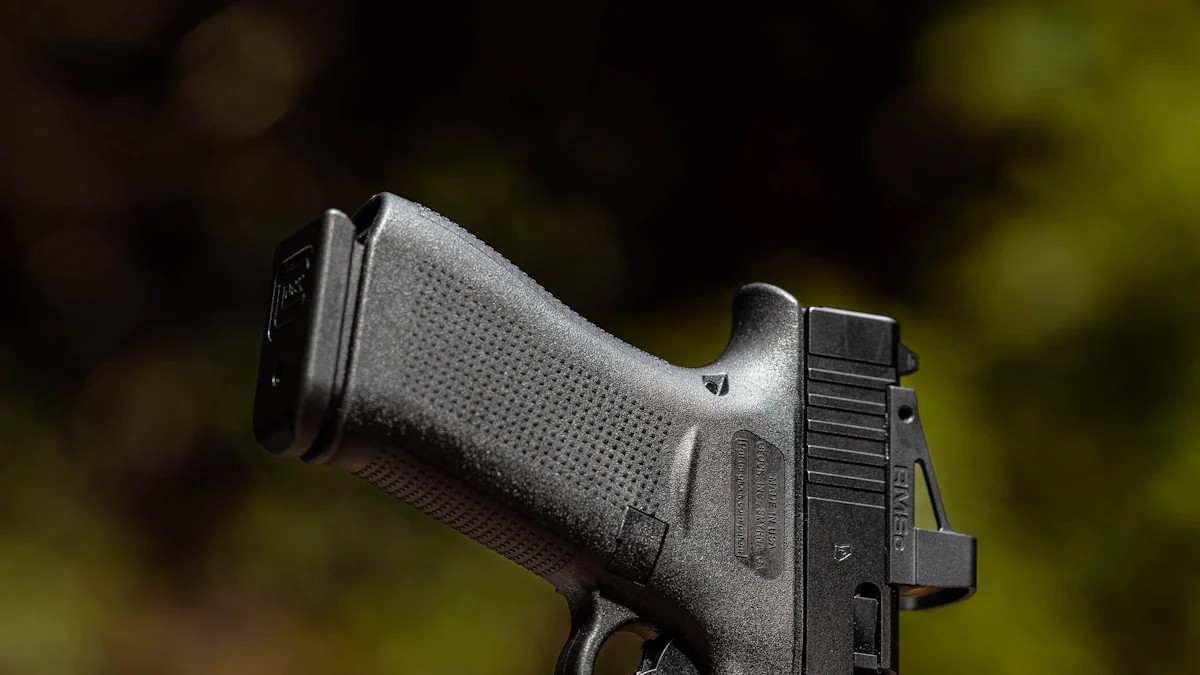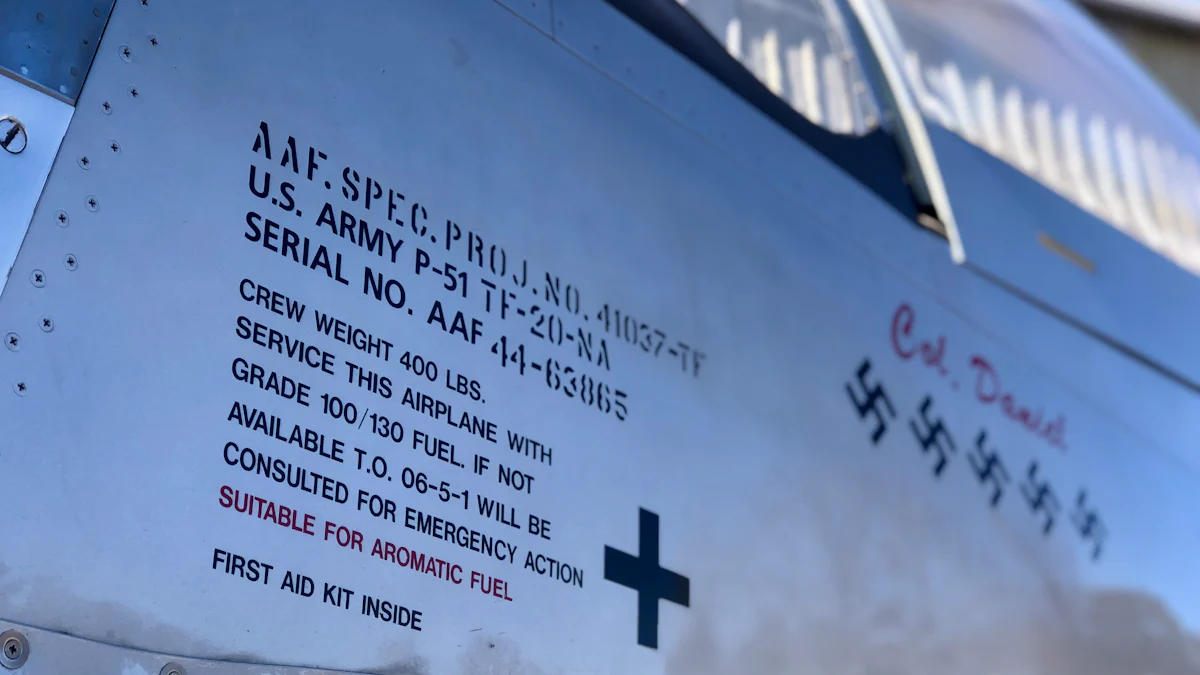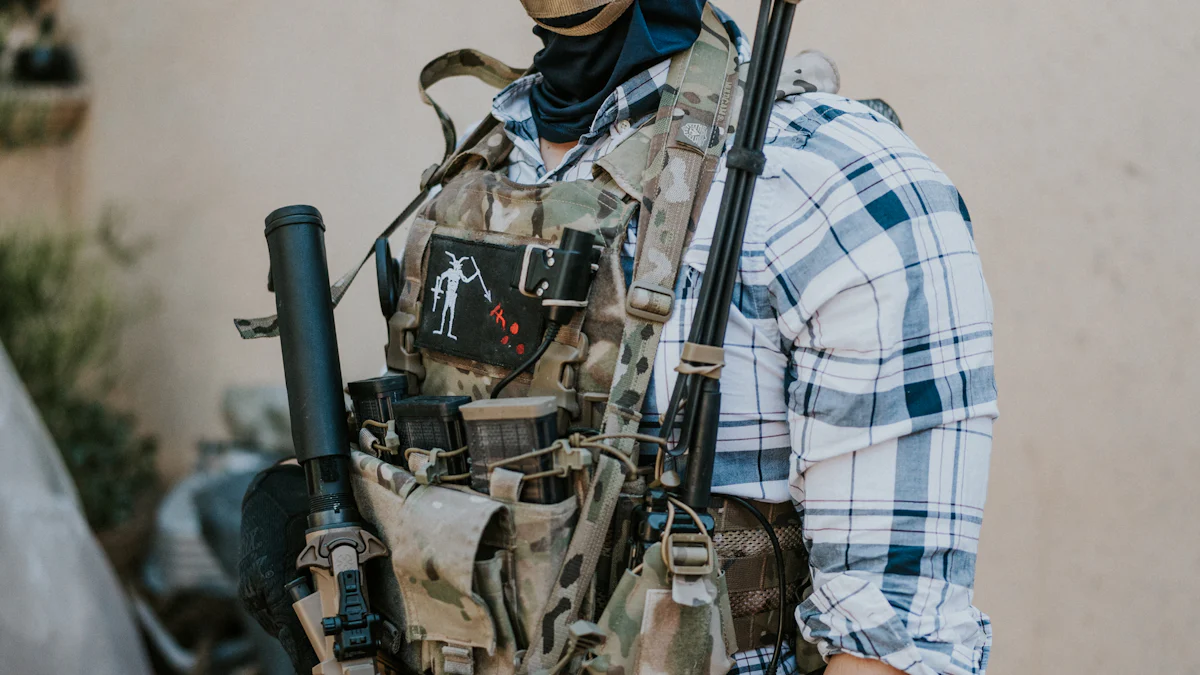
Metal Injection Molding (MIM) stands as a transformative technology with significant Metal Injection Molding Applications for the Defense and Firearms Industry. Its importance lies in crafting high-density, net-shaped components that meet the rigorous demands of this sector. The global market for MIM, valued at USD 2.42 billion in 2020, is projected to reach USD 3.99 billion by 2025. This growth reflects the increasing reliance on MIM for producing intricate firearm parts like triggers and hammers. The defense sector benefits from MIM’s ability to deliver complex geometries and robust components, which are essential for modern military applications.
Key Takeaways
- Metal Injection Molding (MIM) significantly reduces material waste, making it a cost-effective manufacturing option for the defense and firearms industry.
- MIM excels in producing intricate designs with high precision, ensuring that critical components like triggers and hammers meet stringent specifications.
- The process allows for economies of scale, meaning that as production increases, the cost per unit decreases, benefiting high-volume manufacturing.
- MIM components are known for their strength and durability, making them suitable for demanding applications in both firearms and military equipment.
- Future advancements in material science and technology, such as new alloys and automation, are set to enhance MIM’s capabilities and applications.
- While MIM offers many advantages, it has limitations, including challenges with larger part sizes and initial setup costs that may deter some manufacturers.
- Integrating MIM with additive manufacturing can lead to greater design flexibility, opening new possibilities for innovative components in the defense sector.
Benefits of Metal Injection Molding in Defense and Firearms

Cost-Effectiveness
Metal Injection Molding (MIM) offers significant cost advantages in the defense and firearms industry.
Reduction in Material Waste
I have observed that MIM significantly reduces material waste compared to traditional manufacturing methods. Traditional processes often involve machining, which removes material from a larger block, leading to substantial waste. In contrast, MIM uses a precise amount of material to create components, minimizing waste. This efficiency not only conserves resources but also reduces costs associated with raw materials.
Economies of Scale in Production
MIM excels in high-volume production, making it ideal for the defense and firearms sectors. The process allows for the mass production of complex parts without a corresponding increase in cost. As production scales up, the cost per unit decreases, providing substantial savings. This economy of scale is crucial for industries that require large quantities of precision components.
Precision and Complexity
The ability to produce intricate designs with high precision is a hallmark of MIM technology.
Ability to Produce Intricate Designs
I have found that MIM can create complex geometries that are difficult or impossible to achieve with traditional methods. This capability is particularly beneficial in the firearms industry, where intricate designs are often necessary for functionality and performance. MIM allows for the creation of detailed components such as triggers and hammers, enhancing the overall design possibilities.
Consistency in Mass Production
Consistency is vital in the defense and firearms industry, where reliability can be a matter of life and death. MIM ensures uniformity across large production runs, maintaining the same high standards for each component. This consistency is achieved through precise control over the molding process, resulting in parts that meet stringent specifications every time.
Material Properties
The material properties of MIM components make them highly suitable for demanding applications.
Strength and Durability of MIM Components
MIM components exhibit excellent strength and durability, essential qualities for defense and firearms applications. The process allows for the use of high-performance materials that can withstand extreme conditions. I have seen how these components maintain their integrity under stress, ensuring reliability in critical situations.
Versatility in Material Selection
MIM offers versatility in material selection, allowing manufacturers to choose from a wide range of metals and alloys. This flexibility enables the production of components tailored to specific requirements, whether it’s corrosion resistance, high strength, or lightweight properties. The ability to select the most appropriate material enhances the performance and longevity of the final product.
Specific Applications in Defense and Firearms

Firearm Components
Triggers and Hammers
In the realm of firearms, Metal Injection Molding (MIM) plays a pivotal role in crafting essential components like triggers and hammers. I have observed that MIM’s ability to produce complex geometries with high precision makes it ideal for these intricate parts. The process ensures that each trigger and hammer meets stringent specifications, providing reliability and consistency. This precision is crucial, as these components directly impact the firearm’s performance and safety. By utilizing MIM, manufacturers can achieve the desired mechanical properties and dimensional accuracy without the need for additional machining.
Sights and Mounts
Sights and mounts are other critical components in firearms where MIM demonstrates its advantages. The process allows for the creation of detailed and robust parts that can withstand the rigors of use. I have seen how MIM’s flexibility in design enables the production of sights and mounts with precise tolerances and uniform properties. This capability ensures that these components fit seamlessly with other parts of the firearm, enhancing overall functionality. The corrosion resistance and strength of MIM parts further contribute to their durability, making them suitable for long-term use in various environmental conditions.
Military Equipment
Small Mechanical Parts for Weaponry
In military applications, the demand for small mechanical parts with high strength and precision is ever-present. Metal Injection Molding excels in producing these components, offering a cost-effective solution for high-volume production. I have found that MIM’s ability to create near-net-shape parts minimizes material waste and reduces production time. This efficiency is particularly beneficial for manufacturing small mechanical parts used in weaponry, where precision and reliability are paramount. The process’s capability to produce parts with complex shapes and fine details ensures that each component meets the demanding requirements of military specifications.
Components for Communication Devices
Communication devices used in defense operations require components that are both lightweight and durable. MIM provides the versatility needed to produce such parts, allowing for the selection of materials that offer the best combination of strength and weight. I have witnessed how MIM’s precision molding process results in components with exceptional mechanical properties and dimensional accuracy. These attributes are essential for ensuring the reliability and effectiveness of communication devices in critical situations. By leveraging MIM, manufacturers can produce components that enhance the performance and longevity of these devices, supporting the needs of modern military operations.
Challenges and Limitations of MIM in This Field
Technical Challenges
Limitations in Part Size and Weight
Metal Injection Molding (MIM) offers numerous advantages, but it also presents certain technical challenges. One significant limitation involves the size and weight of the parts that can be produced. I have observed that MIM is most effective for small to medium-sized components. Larger parts often face issues related to uniformity and structural integrity. The process requires precise control over the material and molding conditions, which becomes increasingly difficult as the size of the part increases. This limitation restricts the application of MIM in producing larger components for the defense and firearms industry.
Complexity in the Sintering Process
The sintering process in MIM is another area where challenges arise. Sintering involves heating the molded parts to a temperature below their melting point to achieve the desired density and strength. This stage demands meticulous control to ensure consistent quality across all parts. I have found that any deviation in temperature or time can lead to defects such as warping or incomplete bonding. The complexity of the sintering process requires specialized equipment and expertise, adding to the overall challenge of implementing MIM in large-scale production.
Economic Considerations
Initial Setup Costs
From an economic perspective, the initial setup costs for MIM can be substantial. The process involves several stages, including mixing, injection molding, debinding, and sintering, each requiring specific equipment and expertise. I have seen how these upfront investments can be a barrier for smaller manufacturers or those new to the technology. While MIM offers cost savings in material waste and economies of scale, the initial financial outlay can deter some companies from adopting this method.
Market Competition and Pricing
Market competition and pricing also pose challenges for MIM in the defense and firearms industry. The demand for high-quality, precision components is growing, but so is the competition among manufacturers. I have noticed that companies must balance the need to offer competitive pricing with the costs associated with maintaining high standards of quality and precision. This balance can be difficult to achieve, especially in a market where price sensitivity is a significant factor.
Future Trends and Innovations
The Metal Injection Molding (MIM) industry is on the cusp of transformative advancements, particularly in material science and technological innovations. These developments promise to enhance the capabilities and applications of MIM, especially in sectors like defense and firearms.
Advancements in Material Science
Development of New Alloys
I have observed that the development of new alloys is a significant trend in the MIM industry. Researchers are continually exploring novel materials to improve the performance of MIM components. These new alloys aim to offer superior mechanical properties, such as increased strength and corrosion resistance. By leveraging these advancements, manufacturers can produce components that meet the stringent demands of the defense and firearms industry. This progress not only enhances the quality of the final products but also broadens the range of applications for MIM technology.
Improved Material Properties
The quest for improved material properties is driving innovation in MIM. I have seen how advancements in material science lead to components with enhanced durability and performance. These improvements are crucial for applications in the defense sector, where reliability is paramount. By optimizing the material properties, MIM can produce parts that withstand extreme conditions and maintain their integrity over time. This focus on material enhancement ensures that MIM remains a competitive and viable option for producing high-precision components.
Technological Innovations
Automation in MIM Processes
Automation is revolutionizing the MIM industry. I have noticed that integrating automation into MIM processes increases efficiency and consistency. Automated systems streamline production, reducing the potential for human error and ensuring uniformity across large batches. This technological innovation is particularly beneficial for the defense and firearms industry, where precision and reliability are critical. By adopting automation, manufacturers can achieve higher production rates while maintaining the quality of each component.
Integration with Additive Manufacturing
The integration of MIM with additive manufacturing represents a promising frontier. I have found that combining these technologies allows for greater design flexibility and complexity. Additive manufacturing complements MIM by enabling the production of intricate geometries that were previously unattainable. This synergy opens new possibilities for creating innovative components tailored to specific applications in the defense and firearms industry. By harnessing the strengths of both technologies, manufacturers can push the boundaries of what is achievable with MIM.
Experts in Metal Injection Molding Industry highlight that ongoing innovations in material science and processing technology continue to expand the potential applications for MIM. These advancements drive the adoption of MIM across diverse industries, offering cost-effective solutions for producing complex, high-precision components.
Metal Injection Molding (MIM) offers significant benefits in the defense and firearms industry. It enables the production of complex, high-precision parts with minimal material waste, making it a cost-effective option for large-scale production. MIM’s ability to manufacture intricate designs at a reduced cost per unit enhances its appeal for high-volume applications. The growing demand for lightweight, high-performance components positions MIM as a vital manufacturing process in the modern industrial landscape. Future advancements in material science and technology will likely expand MIM’s capabilities, further impacting the industry positively.
FAQ
What is Metal Injection Molding (MIM)?
Metal Injection Molding (MIM) is a manufacturing process that combines the versatility of plastic injection molding with the strength and integrity of metal. I have found that it allows for the production of complex, high-density metal parts with precision and efficiency.
How does MIM benefit the defense and firearms industry?
MIM offers several advantages for the defense and firearms industry. It enables the production of intricate components with minimal material waste, making it cost-effective for large-scale production. The process also ensures consistency and reliability, which are crucial in this sector.
What are the proper applications for MIM components in defense applications?
MIM components find applications in various defense scenarios. I have observed that they are particularly useful in manufacturing firearm parts like triggers, hammers, and sights. These components require precision and durability, which MIM provides effectively.
Are MIM parts inferior to traditionally manufactured parts?
MIM does not equal inferior. Although MIM is a relatively new technology, introduced in the 1980s, it has proven its capability in producing high-quality components. The process is complex, but it results in parts that meet stringent industry standards.
What materials can be used in MIM?
MIM offers versatility in material selection. Manufacturers can choose from a wide range of metals and alloys, including stainless steel, titanium, and nickel-based alloys. This flexibility allows for the production of components tailored to specific requirements.
What are the limitations of MIM in the defense and firearms industry?
While MIM offers many benefits, it does have limitations. I have noticed that it is most effective for small to medium-sized components. Larger parts may face challenges related to uniformity and structural integrity. Additionally, the initial setup costs can be substantial.
How does MIM compare to traditional manufacturing methods?
MIM provides several advantages over traditional methods, such as reduced material waste and the ability to produce complex geometries. However, it requires specialized equipment and expertise, which can increase initial costs. Despite this, the long-term benefits often outweigh these challenges.
What future trends can we expect in the MIM industry?
The MIM industry is poised for significant advancements. I have seen ongoing developments in material science, such as the creation of new alloys with improved properties. Technological innovations, like automation and integration with additive manufacturing, are also enhancing MIM’s capabilities.
How does MIM ensure consistency in mass production?
MIM ensures consistency through precise control over the molding process. This control results in uniformity across large production runs, maintaining high standards for each component. Consistency is vital in the defense and firearms industry, where reliability is paramount.
Can MIM be integrated with other manufacturing technologies?
Yes, MIM can be integrated with other technologies, such as additive manufacturing. This integration allows for greater design flexibility and complexity, opening new possibilities for creating innovative components tailored to specific applications.
